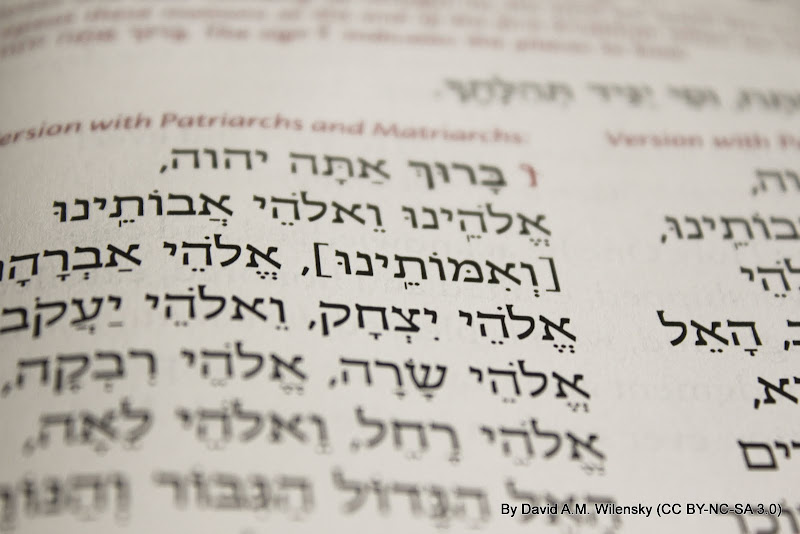Reform Siddur Download
Rabbi Elyse D. “There are even those in my community who come to Shabbat worship each week who don’t believe in God,” said Rabbi Frishman, who leads the Barnert Temple in Franklin Lakes, N.J. “How do we help them resonate with the language of prayer, which is very God-centric and evokes a personal God, a God that talks to you in a sense? There are many, many Jews who do not believe in God that way.”Unlike the Reform movement’s last prayer book, “Gates of Prayer,” which was published in 1975, the new prayer book has a Hebrew title, “Mishkan T’filah” (which means a sanctuary or dwelling place for prayer). And it reads from back to front, like a traditional Hebrew text, which was only an optional format when “Gates of Prayer” was published.
Rabbi Frishman thought up the innovative layout for the new prayer book, or siddur.There are four versions of each prayer laid out on a typical two-page spread. (Since the book is read back to front, the right page is read before the left one). On the right page is the prayer in Hebrew, the transliteration of the Hebrew prayer into phonetical English, and a more literal translation. On the left-hand page is a more poetic translation of the prayer, followed by a metaphorical or meditative passage reflecting on the prayer, sometimes by a well-known writer like Langston Hughes or Yehuda Amichai.Rabbis who prefer to lead a more traditional service can choose a prayer from the right-hand side of the page, while those who prefer a more alternative approach can choose from the left side.“This is a way of having the best of both worlds,” said Rabbi Peter S. Knobel, president of the Central Conference of American Rabbis, the association of Reform rabbis, which is publishing the book. “You have the possibility of doing, if you want, an entire service in Hebrew, as traditional as you can be within the Reform movement. At the same time, you can do something extremely creative.”The Reform movement, which originated in Germany in the 19th century, claims 1.5 million members in 900 congregations in North America.
There are about 5.2 million Jews in the United States, according to the National Jewish Population Survey, conducted from 2000 to 2001.Steven M. Cohen, a sociologist of American Jewry and a professor at the Jewish Institute of Religion at Hebrew Union College, said, “Historically the Reform movement has seen itself as the movement most responsive to the changing times,” one of the main reasons that its prayer book is periodically revised. AdvertisementBut that and other features were changed as the book was updated in 1922 and 1941. When the Reform movement adopted its next prayer book in 1975, “Gates of Prayer,” it reflected Reform’s move toward Zionism and some acceptance of tradition, featuring services for Israeli Independence Day and Holocaust commemoration.But within 10 years, some Reform members were already dissatisfied, saying that “Gates of Prayer” used sexist language and failed to reflect rising interest in spirituality and participatory worship. Some congregations created and photocopied their own makeshift prayer books, and some kept using the old Union Prayer Book.Since 1985, committees of rabbis, cantors and laypeople — about 50 people in all — have been involved in developing the new prayer book. Early versions were tested in congregations, which sent in their feedback.

Mishkan Tefillah A Reform Siddur
Yet the authors are prepared for criticism, Rabbi Frishman said.Some critics will say there is too much Hebrew, and others will say there is too little, she said. Some will undoubtedly find it surprising that there are no italics denoting responsive readings that alternate between the rabbi and congregation, and no “choreographical notes” instructing the congregation when to rise and when to sit.Rabbi Knobel said: “That was deliberate because there is such diversity of practice now within the Reform movement. You have people who sit for the Sh’ma, which is something that was unthinkable,” — referring to the prayer considered the most important in Judaism.There is no requirement that synagogues adopt the new prayer books, but it is expected that many, if not most, eventually will because the movement has been preparing to receive them for years. Synagogues must buy their own sets, which they often accomplish with donations. There are nine versions — with and without the transliterations, in large type and some just for Shabbat — and the prices vary from $18 to $40 each (a gift edition is $100).The movement’s leaders hope the new prayer book will help revive a worship experience that many Jews avoid.Scott A. Shay, the author of “Getting Our Groove Back: How to Energize American Jewry,” said, “Let’s not forget that more than three-quarters of American Jews don’t go to any synagogue on a regular basis.“Each movement realizes that the real struggle for the future and soul of American Jewry are those who are outside of the synagogue today,” said Mr. Shay, a banking executive who has been active in Jewish organizations.
Reform Siddur Download For Pc
Model: Belinda Lawson, Helen StephensPosition:Implement:Studio: firmhandspankingFormat: mp4 (zip)Duration: 00:18:18Resolution: 1280x720Size: 540,2 MBDescription: Nude paddling: Helen Stephens and Belinda Lawson spanked to the limit Nude paddling continues in this epic punishment at Reform Academy. Two stunning girls, Belinda Lawson and Helen Stephens, strip naked and bend over for 50 solid whacks with a stinging on their bare buttocks. Every stroke is counted out loud and hot Reaction Cam replay captures every moment. Great behind the scenes interview too!